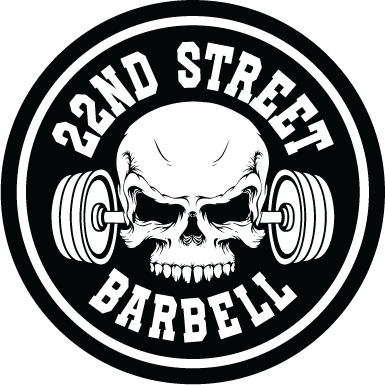EVENT INFO
PLEASE BE AWARE THAT THERE ARE ABSOLUTELY NO REFUNDS ON ENTRY FEES OR ANY TRANSFER OF ENTRIES
41st ANNUAL IOWA STATE FAIR DRUG FREE BENCH PRESS DEADLIFT CONTEST
AUGUST 16th, 2025 - Lifting starts at 9:00 AM at the Iowa State Fair in Des Moines. IA Susan Knapp Amphitheater
PLEASE BE AWARE THAT THERE ARE ABSOLUTELY NO REFUNDS ON ENTRY FEES OR ANY TRANSFER OF ENTRIES
Weigh-ins: 3 pound allowance at weigh-ins (You must attend one of the weigh-in times to compete)
Friday, August 15th: 9:00-11:00 AM and 4:00-6:00 PM at 22nd Street Barbell at 3129 NW Prairie Lane, Des Moines, Iowa 50313
Saturday, August 16th: 7:00-8:00 AM at the Iowa State Fair Susan Knapp Amphitheater
Please note we will not be doing weigh-ins after this since we have to get the meet going. PLEASE be early, allow time to get to the fair, get parked, and get to the lifting area.
Rules Meeting: 8:30 AM (ALL lifters must attend)
Lifting starts: 9:00 AM (Bench press is the first event)
Location: Iowa State Fairgrounds 30th and E Grand Ave., Des Moines, IA
Susan Knapp Amphitheater located in the NE corner of the fair
ENTRY FEE: $75 PER DIVISION
PLEASE BE AWARE THAT THERE ARE ABSOLUTELY NO REFUNDS ON ENTRY FEES OR ANY TRANSFER OF ENTRIES
THIS MEET IS ALL DRUG FREE PLEASE DO NOT ENTER IF YOU ARE NOT DRUG FREE
What to Wear
On the bench: there are no singlets required but we do NOT allow anything baggy to be worn. We have to see the hips stay on the bench.
Deadlift: singlets are not required, knee high socks ARE required as well as some type of shoes. Wrist straps are NOT allowed.
Allowed equipment: belt, wrist wraps and knee sleeves
*Note: Wrist wraps cannot touch the bar and cannot wear loop around the thumb. Knee sleeves cannot touch any other items of clothing.
bench press
1. The head of the bench must be placed on the platform facing the chief referee.
2. The lifter must lie on his back with shoulders and buttocks in contact with the flat bench surface.
His hands may grip the bar with a “thumbs around” grip.
Note: The use of the “reverse grip” on the bench is strictly forbidden.
4. Feet can either be flat on the floor or heels up. This position must be maintained throughout the attempt and cannot change once the attempt has started.
3. The head may be raised off the bench or move during the performance of the lift.
4. If the lifter’s costume and the bench surface are not of a sufficient color contrast to enable the referees to detect possible raising movement at the points of contact, then the bench surface may be covered accordingly. NOTHING EXCESSIVELY BAGGY ALLOWED FOR SHORT OR PANTS – WE HAVE TO BE ABLE TO KNOW THE BUTTOCKS ARE NOT LEAVING THE BENCH.
5. To achieve firm footing the lifter may use flat surfaced plates or blocks not exceeding 30 cm in height, to build up the surface of the platform. Whichever method is chosen, the entire foot must be flat on the surface. If blocks are used, they shall not exceed 45 cm x 45 cm.
6. Not more than five and not less than two spotter/loaders shall be in attendance. The lifter may enlist the help of the spotter/loaders in removing the bar from the racks. The lift off must be to arms length and not down to the chest.
7. The spacing of the hands shall not exceed 81 cm measured between the forefingers.
The index finger MUST completely cover the 81 cm ring.
8. After receiving the bar at arms length, the lifter shall lower the bar to his chest and await the chief referee’s signal.
9. The signal shall be a clap of the hands or the command: “PRESS” to press when the bar is motionless on the chest. As an alternative to clapping the chief referee may use a clapping device subject to the approval of the Jury.
After the signal to commence the lift has been given, the bar is pressed upwards to straight arms length and held motionless until the audible command “RACK” is given. Causes for disqualification of a bench press. Failure to observe the chief referee’s signals at the commencement or completion of the lift
2. Any change in the elected lifting position during the performance of the lift; I.E. any raising of the shoulders, buttocks or movement or the feet from their original points of contact with the bench or the floor, or lateral movement of the hands on the bar.
3. Failure to press the bar to full extension of the arms at the completion of the lift.
4. No heaving or bouncing the bar off the chest.
5. Allowing the bar to sink into the chest after receiving the chief referee’s signal.
6. Any pronounced or exaggerated uneven extension of the arms during the lift.
7. Any downward movement of the bar in the course of being pressed out.
8. Contact with the bar by spotter/loaders between the chief referee’s signals, Incidental contact by a spotter/loader does not invalidate a lift as long as doesn’t make the lift easier for the lifter. Chief referee’s discretion.
9. Any contact of the lifter’s feet with the bench or its support.
10. Deliberate contact between the bar and the bar rest supports during the lift in order to make the press easier.
Deadlift
1. The bar must be laid horizontally in front of the lifter’s feet, gripped with an optional grip in both hands and lifted without any downward movement until the lifter is standing erect.
2. The lifter shall face the front of the platform.
3. On completion of the lift, the knees shall be locked in a straight position and the shoulders square or back.
4. The chief referee’s signal shall consist of a downward movement of the hand and the audible command “down.” The signal will not be given until the bar is held motionless and the lifter is in the apparent finished position.
Any raising of the bar or any deliberate attempt to do so will count as an attempt.
THE BAR MUST BE LOWERED WITH CONTROL – NO EXCEPTIONS – NO DROPPING THE BAR WITHOUT CONTROL

